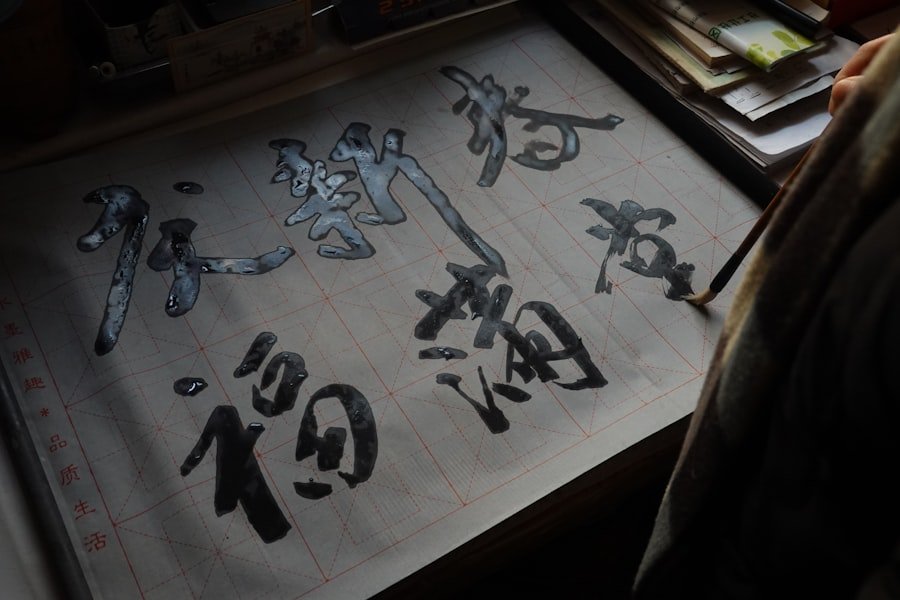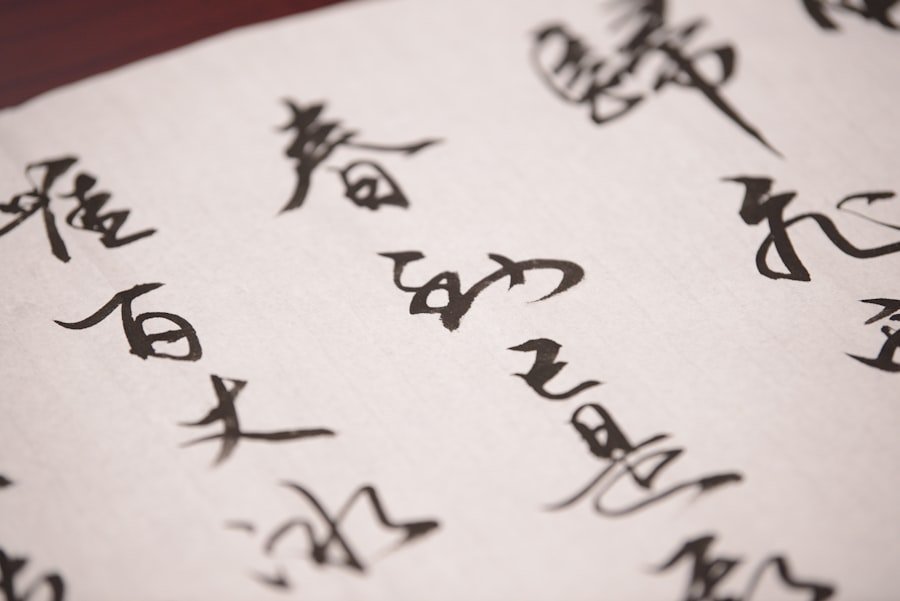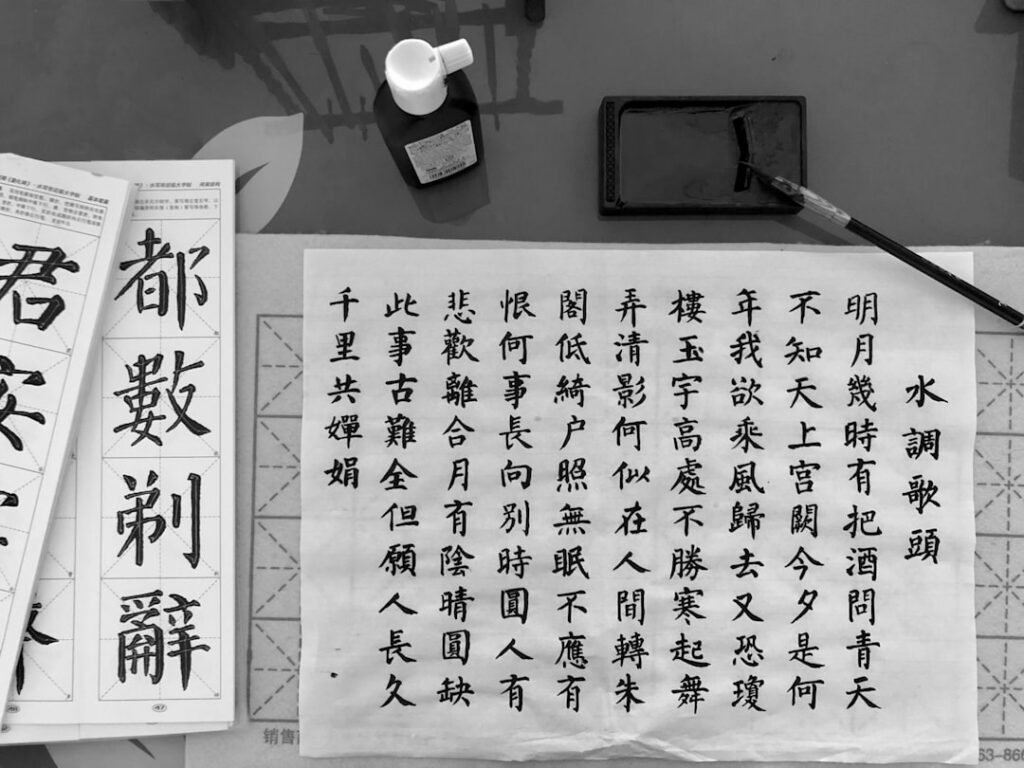Chinese calligraphy and tea tasting are two of the most revered cultural practices in China, each steeped in history and tradition. Calligraphy, often regarded as a form of visual art, transcends mere writing; it embodies the essence of Chinese philosophy, aesthetics, and spirituality. The brush strokes, the ink, and the paper come together to create not just words but a profound expression of the artist’s emotions and thoughts.
On the other hand, tea tasting is an exploration of flavours, aromas, and textures that reflect the rich diversity of Chinese tea culture. Together, these two art forms offer a unique opportunity for participants to immerse themselves in the beauty and depth of Chinese heritage. Organising a workshop that combines Chinese calligraphy with tea tasting can be an enriching experience for participants.
It allows them to engage with these traditional practices in a hands-on manner while fostering a deeper appreciation for the cultural significance behind them. As attendees learn to wield a brush and taste various teas, they embark on a journey that connects them to centuries of tradition and artistry. This article will explore the essential elements needed to create a successful workshop that celebrates both Chinese calligraphy and tea tasting. Master the art of Chinese calligraphy. Enroll now at the LC Chinese School in Oslo.
Table of Contents
ToggleSummary
- Chinese calligraphy and tea tasting workshops offer a unique cultural experience
- Choosing the right venue is crucial for creating an authentic Chinese atmosphere
- Gathering the necessary materials and equipment is essential for a successful workshop
- Selecting the perfect calligraphy and tea tasting instructors can make or break the event
- Encouraging participation and interaction is key to a successful workshop experience
Setting the Scene: Choosing the Right Venue
Selecting an appropriate venue is crucial for setting the tone of the workshop. The ideal location should reflect the essence of Chinese culture, providing an atmosphere that is both inviting and conducive to creativity. A space adorned with traditional Chinese decor, such as calligraphy scrolls, bamboo plants, and soft lighting, can transport participants into a serene environment where they can fully immerse themselves in the experience.
Moreover, the venue should be spacious enough to accommodate all participants comfortably while allowing for movement and interaction. A well-lit room with ample natural light can enhance the creative process, making it easier for attendees to focus on their calligraphy and enjoy their tea tasting. Additionally, accessibility is an important consideration; ensuring that the venue is easy to reach will encourage more people to attend and participate in this cultural exploration.
Gathering the Necessary Materials and Equipment

To facilitate a successful workshop, it is essential to gather all necessary materials and equipment ahead of time. For the calligraphy segment, participants will require high-quality brushes, ink, ink stones, and rice paper. Each of these items plays a significant role in the art of calligraphy; for instance, the type of brush can greatly influence the style and fluidity of the strokes.
Providing a variety of brushes allows participants to experiment with different techniques and find what resonates with them. In addition to calligraphy supplies, a well-curated selection of teas is vital for the tasting portion of the workshop. Participants should have access to a range of teas, including green, black, oolong, and herbal varieties, each offering unique flavours and aromas.
It is also important to provide appropriate teaware, such as teapots, cups, and infusers, to ensure that participants can fully appreciate the nuances of each tea. By preparing these materials in advance, organisers can create a seamless experience that allows participants to focus on learning and enjoying their time.
Selecting the Perfect Calligraphy and Tea Tasting Instructors
The success of any workshop hinges on the quality of its instructors. For a workshop centred around Chinese calligraphy and tea tasting, it is essential to select knowledgeable and passionate individuals who can effectively share their expertise with participants. A skilled calligrapher should not only possess technical proficiency but also have a deep understanding of the cultural significance behind each character and stroke.
Their ability to convey this knowledge will inspire participants and enhance their learning experience. Similarly, a tea expert should be well-versed in the various types of Chinese teas, their origins, and brewing techniques. They should be able to guide participants through the tasting process, helping them identify different flavours and aromas while sharing stories about each tea’s history.
The ideal instructors will create an engaging atmosphere that encourages questions and fosters interaction among participants. By choosing instructors who are both knowledgeable and enthusiastic about their crafts, organisers can ensure that attendees leave with a greater appreciation for Chinese calligraphy and tea culture.
Designing the Workshop Schedule and Activities
A well-structured schedule is key to maintaining participant engagement throughout the workshop. The day should be divided into segments that allow for both instruction and hands-on practice. For instance, after an introductory session on Chinese calligraphy techniques, participants could spend time practising basic strokes before moving on to more complex characters.
This gradual progression helps build confidence while allowing individuals to develop their skills at their own pace. Incorporating tea tasting into the schedule can provide a refreshing break between calligraphy sessions. Participants can enjoy sampling different teas while discussing their experiences with one another.
This not only enhances their understanding of tea culture but also fosters camaraderie among attendees. Additionally, including interactive activities such as group challenges or collaborative projects can further enrich the experience by encouraging teamwork and creativity.
Promoting the Event: Marketing and Invitations

Effective marketing is essential for attracting participants to the workshop. Utilising various channels such as social media platforms, community bulletin boards, and local cultural organisations can help spread the word about this unique event. Creating visually appealing promotional materials that highlight the beauty of Chinese calligraphy and tea culture will capture potential attendees’ interest.
Invitations should be thoughtfully crafted to convey the essence of the workshop while providing essential details such as date, time, location, and registration information. Offering early bird discounts or group rates can incentivise individuals to sign up promptly. Additionally, reaching out to local schools or community centres may help attract a diverse audience eager to learn about these traditional practices.
Creating an Authentic Chinese Atmosphere
To truly immerse participants in Chinese culture during the workshop, it is important to create an authentic atmosphere that reflects its rich heritage. This can be achieved through various means such as music, decor, and even food offerings. Playing traditional Chinese music softly in the background can enhance the overall experience while providing a calming ambiance conducive to creativity.
Decorating the venue with elements such as lanterns, silk fabrics, or traditional artwork can further transport participants into a world steeped in history. Additionally, offering light refreshments or snacks inspired by Chinese cuisine can add an extra layer of authenticity to the event. By thoughtfully curating every aspect of the workshop environment, organisers can create a memorable experience that resonates with attendees long after they leave.
The Art of Chinese Calligraphy: Understanding the Basics
Before diving into practical exercises, it is essential for participants to grasp the fundamental principles of Chinese calligraphy. This includes understanding the significance of brushwork, ink application, and character structure. Instructors should introduce key concepts such as “the four treasures” of calligraphy: brush, ink, paper, and ink stone.
Each element plays a vital role in achieving mastery over this art form. Participants should also learn about different styles of calligraphy—such as regular script (kaishu), running script (xingshu), and cursive script (caoshu)—and how each style conveys distinct emotions and meanings. By providing context around these styles, instructors can help participants appreciate the depth of expression found within Chinese calligraphy while encouraging them to experiment with various techniques during practice sessions.
Exploring the World of Chinese Tea: Tasting and Appreciation
The world of Chinese tea is vast and varied, offering an array of flavours that reflect its diverse regions and production methods. During the tea tasting segment of the workshop, participants should be introduced to different types of teas along with their unique characteristics. For instance, green tea is known for its fresh taste and health benefits, while oolong tea offers a complex flavour profile that evolves with each steeping.
Instructors should guide participants through proper brewing techniques for each type of tea while encouraging them to engage their senses during tastings. Participants can learn how to observe colour, inhale aromas, and savour flavours—transforming tea drinking into an art form in itself. By fostering an appreciation for these nuances, attendees will leave with not only knowledge but also a newfound respect for Chinese tea culture.
Encouraging Participation and Interaction
Creating an interactive environment is crucial for ensuring that participants feel engaged throughout the workshop. Encouraging questions during demonstrations allows attendees to clarify any uncertainties they may have about techniques or concepts being presented. Additionally, incorporating group activities—such as collaborative calligraphy projects or team-based tea tastings—can foster camaraderie among participants while enhancing their learning experience.
Instructors should also provide constructive feedback during practice sessions; this not only helps individuals improve their skills but also builds confidence as they see their progress over time. By cultivating an atmosphere where everyone feels comfortable sharing their thoughts and experiences, organisers can create a vibrant community centred around appreciation for Chinese calligraphy and tea culture.
Wrapping Up: Evaluating the Workshop and Planning for Future Events
As the workshop comes to a close, it is important to take time for reflection and evaluation. Gathering feedback from participants through surveys or informal discussions can provide valuable insights into what worked well and what could be improved for future events. Understanding attendees’ experiences will help organisers refine their approach while ensuring that future workshops continue to meet participants’ needs.
Moreover, sharing highlights from the workshop—such as photos or participant testimonials—on social media or community platforms can help maintain interest in upcoming events while celebrating the success of this cultural exploration. By fostering ongoing engagement with attendees after the event concludes, organisers can build a loyal community eager to learn more about Chinese calligraphy and tea culture. At LC Chinese School in Oslo, we offer specialised courses in Chinese calligraphy that cater to all skill levels—from beginners eager to learn basic strokes to advanced practitioners looking to refine their techniques further.
Our experienced instructors are passionate about sharing their knowledge while creating an inclusive environment where everyone feels welcome to explore this beautiful art form. We invite you to join us on this journey into Chinese culture through our engaging courses that promise not only skill development but also personal growth through artistic expression!
Master the art of Chinese calligraphy. Enroll now at the LC Chinese School in Oslo.







